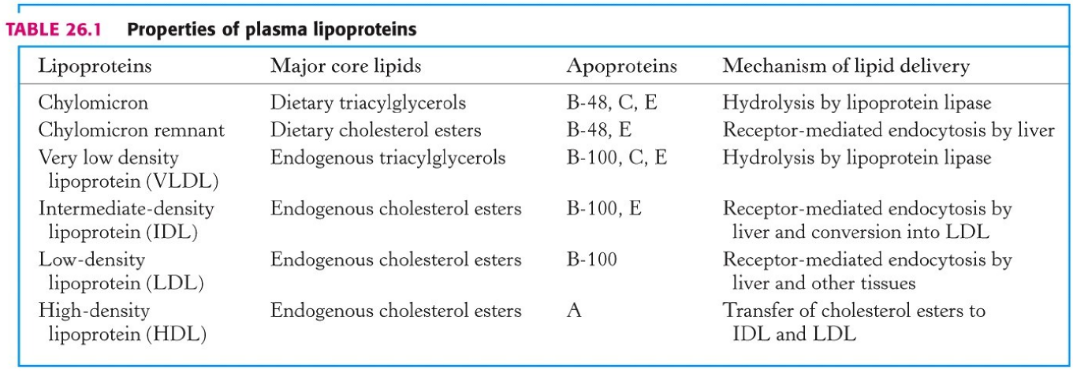Page created on March 7, 2018. Last updated on December 18, 2024 at 16:55
Summary
- Lipoproteins are complex proteins that transport lipids around in the body, composed of apolipoproteins (polypeptides), cholesterol, triacylglycerols and phospholipids
- The lipoproteins, where the first contains most lipids and the last contains the least, are chylomicrons, VLDL, LDL and HDL
- Chylomicrons transport dietary fat from the intestines into the body. This is the exogenous lipid transport pathway. The apolipoprotein in chylomicrons is mostly ApoB-48.
- VLDL carries lipids from the liver to tissues that need energy. VLDL is mostly broken down in the blood to LDL by lipoprotein lipase. This is the endogenous pathway.
- LDL is what tissues that need energy absorb, by receptor-mediated endocytosis.
- HDL contains very little fat and is used for transporting cholesterol back to the liver from the extrahepatic tissues. This is the reverse cholesterol transport pathway.
Apolipoproteins
The prefix “apo-“ means “only polypeptide”, which implies that the protein contains no carbohydrate, lipid or prosthetic groups. Many types of apolipoproteins exist, but they can be divided into two classes: ApoB proteins and the “others”, containing ApoA, ApoC, ApoD and ApoE. All types have subtypes. ApoB proteins are found in all lipoproteins not involved in the reverse cholesterol transport pathway, while the other apolipoproteins can be found in all types. ApoBs are not water-soluble, while the other types are.
ApoB has two subtypes, ApoB-48 and ApoB-100, the number referring to the number of amino acid residues in the polypeptide. ApoB-48 is only found in chylomicrons, where it is important for the structure of the huge (compared to the other lipoproteins) lipoprotein. ApoB-100 is only found in VLDL and LDL and is the part of the lipoprotein that binds to the LDL receptor on the cell surface of the cell needing energy.
See the table below and the Biochemistry 1 curriculum for more details.


From the figure above, it’s important to recognize that LDL contains the highest amount of cholesterol. Also note that only chylomicrons and VLDL contains a majority of their fat-content in triacylglycerols, while the others store them as cholesteryl esters.
Some of the properties of the lipoproteins are summed up here
- Chylomicrons are the biggest lipoproteins (by far)
- HDL contains the most protein and the least triacylglycerides
- The second biggest lipoprotein is VLDL
- The third biggest (and the second smallest) lipoprotein is LDL, which also contains the most cholesterol